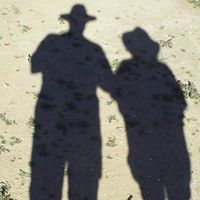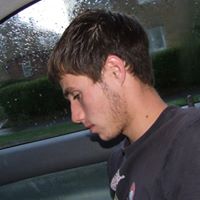Guy M Hatch
age ~80
from Logan, UT
- Also known as:
-
- Guy Meredith Hatch
- Guy E Hatch
- Meredith G Hatch
- Phone and address:
-
1560 1580, Logan, UT 84341
(435)7535459
Guy Hatch Phones & Addresses
- 1560 1580, Logan, UT 84341 • (435)7535459
- 1219 400, Logan, UT 84341 • (435)7538110
- North Logan, UT
Work
-
Position:Medical Professional
Education
-
Degree:Graduate or professional degree
License Records
Guy Meredith Hatch
Address:
Logan, UT
License #:
161790-1205 - Expired
Category:
Physician
Issued Date:
Jan 19, 1978
Expiration Date:
Jan 31, 2004
Type:
Physician & Surgeon
Guy Meredith Hatch
Address:
Logan, UT
License #:
161790-8905 - Expired
Category:
Physician
Issued Date:
Jan 1, 1910
Expiration Date:
Jan 31, 2004
Type:
Physician/Surgeon CS (Schedule 2-5)
Us Patents
-
Clothing Apparatus, Carrier For A Biophysical Sensor, And Patient Alarm System
view source -
US Patent:20020124295, Sep 12, 2002
-
Filed:Oct 30, 2001
-
Appl. No.:10/000181
-
Inventors:Loel Fenwick - Coolin ID, US
Guy Hatch - Logan UT, US -
International Classification:A41B001/00
-
US Classification:002/069000
-
Abstract:A clothing apparatus is provided with at least one fabric panel, a panel of stretch fabric, a sensor unit retaining pocket, and a light opaque fabric. The at least one fabric panel is configured to encompass a patient thoracic region. The stretch fabric panel is joined to the fabric panel about the thoracic region of a patient when wearing the clothing apparatus. A free edge of the overlapping stretch fabric panel is configured to be releasably mated along an overlapping area of the stretch fabric panel with one of the fabric panel and the stretch fabric panel. The sensor unit retaining pocket is provided between the at least one fabric panel and the stretch fabric panel. The light opaque fabric is provided in the fabric panel about an opening in an inner surface of the fabric panel contiguous with the retaining pocket. The opening is configured to enable a sensor unit received within the pocket to maintain direct contact with a skin surface of a patient over the thoracic heart region. The light opaque fabric is configured to reduce ambient light levels immediately surrounding the pocket opening. A method is also provided.
-
Ventilator
view source -
US Patent:48382574, Jun 13, 1989
-
Filed:Jul 17, 1987
-
Appl. No.:7/074730
-
Inventors:Guy M. Hatch - Logan UT
-
International Classification:A61M 1600
-
US Classification:12820418
-
Abstract:The respirator system controls operation of an exhale gas pressure control valve and an delivery gas flow control valve interposed in tubes leading to the patient's airway. Each control valve is operated by a Venturi flow pilot valve having a variable exhaust flow which is a function of an electromagnetic linear actuator. Operation of the electromagnetic actuator is accurately controlled by computer hardware and software, which can operate the pilot valves to meet a wide range of ventilation modes for patients of any size or physical condition.
-
Ultra-Filtration Vacuum System
view source -
US Patent:59220937, Jul 13, 1999
-
Filed:Oct 14, 1997
-
Appl. No.:8/949742
-
Inventors:Randy Bruce James - Salt Lake City UT
Michael John Edgington - Midvale UT
Guy Merideth Hatch - Logan UT -
Assignee:Miracle Marketing Corporation - Salt Lake City UT
-
International Classification:B01D 4702
-
US Classification:55322
-
Abstract:An ultra-filtration vacuum system with a first liquid stage filter and that has structure to direct particle laden air into a vortex in a circular cyclone chamber over a surface of a first liquid filter medium to direct particulates in the air to a wall of the cyclone chamber for collection by the first liquid filter medium. An open-pore labyrinth filter is provided for further filtering air from the first liquid stage. A second liquid stage is provided to filter for filtering air from the labyrinth filter and has a dispersion chamber with an inlet that directs the particle laden air from the labyrinth filter directly into a second liquid filter medium to transfer momentum of the air directly to the second liquid filter medium, the dispersion chamber constructed with surfaces against which medium is propelled by the energy of the injected air to disperse the medium in the air, the dispersion chamber shaped such that a cascading and undulating liquid surface is formed.
-
Energy Conversion Monitoring Devices And Methods
view source -
US Patent:20230009171, Jan 12, 2023
-
Filed:Jul 20, 2022
-
Appl. No.:17/813739
-
Inventors:- San Jose CA, US
Guy Meredith HATCH - Logan UT, US -
Assignee:REVEAL BIOSENSORS, INC. - San Jose CA
-
International Classification:A61B 5/026
A61B 5/00
A61B 5/11
A61B 5/08
A61M 21/00
A61B 5/0205 -
Abstract:Persons with sleep disordered breathing (SDB) may, or may not, recognize that they have symptoms of SDB, and/or that they may be at-risk of, or suffering certain health problems associated with SDB, including death. The disclosed Energy Conversion Monitor (ECM) sensor, when embodied, for example, in a wearable upper-armband format, has been demonstrated to be more sensitive and responsive than pulse oximetry monitoring of blood oxygen saturation as an indication of hypoxic stress induced by SDB, and is compatible with: (1) inclusion in sleep laboratory polysomnograph (PSG) testing instrumentation, (2) home-based diagnostic testing for SDB, (3) control of home-use airway therapy devices, (4) continuous remote surveillance and refinement of airway therapy, and (5) spot-check and continuous surveillance of sleep quality in the general population. The disclosed ECM also provides new measurements of physiologic stress during and following exercise. When applied during initial care of premature newborn infants, it offers improved therapeutic guidance during their transition from their limited in utero oxygen supply conditions, to the increased oxygen availability from breathing air. When applied during resuscitation of persons suffering from hypoxia and during reperfusion of ischemic tissue, such as during treatment of ischemic stroke, or ischemic heart attack, the ECM sensor can provide objective guidance regarding the safe and effective resupply of oxygen to the hypoxia-adapted tissue to help reduce or prevent microvascular occlusion and cellular injury. As a continuously worn physiologic surveillance monitor, the ECM offers the potential of early detection of sepsis. With the elderly and infirm, it offers a convenient and comfortable means of continuously assessing variations in status while awake and asleep.
-
Optical Physiologic Sensor Devices
view source -
US Patent:20200237274, Jul 30, 2020
-
Filed:Mar 23, 2020
-
Appl. No.:16/826744
-
Inventors:- San Jose CA, US
Guy Meredith HATCH - Logan UT, US -
Assignee:REVEAL BIOSENSORS, INC. - San Jose CA
-
International Classification:A61B 5/1455
A61B 5/00 -
Abstract:Physiologic sensors and methods of application are described. These sensors function by detecting recently discovered variations in the spectral optical density at two or more wavelengths of light diffused through the skin. These variations in spectral optical density have been found to consistently and uniquely relate to changes in the availability of oxygen in the skin tissue, relative to the skin tissue's current need for oxygen, which we have termed Physiology Index (PI). Current use of blood gas analysis and pulse oximetry provides physiologic insight only to blood oxygen content and cannot detect the status of energy conversion metabolism at the tissue level. By contrast, the PI signal uniquely portrays when the skin tissue is receiving ‘less than enough oxygen,’ just the right amount of oxygen,′ or ‘more than enough oxygen’ to enable aerobic energy conversion metabolism. The PI sensor detects one pattern of photonic response to insufficient skin tissue oxygen, or tissue hypoxia, (producing negative PI values) and a directly opposite photonic response to excess tissue oxygen, or tissue hyperoxia, (producing positive PI values), with a neutral zone in between (centered at PI zero). Additionally, unique patterns of PI signal response have been observed relative to the level of physical exertion, typically with a secondary positive-going response trend in the PI values that appears to correspond with increasing fatigue. The PI sensor illuminates the skin with alternating pulses of selected wavelengths of red and infrared LED light, then detects the respective amount of light that has diffused through the skin to an aperture located a lateral distance from the light source aperture. Additional structural features include means of internally excluding light from directly traveling from the light emitters to the photodetector within the sensor. This physiology sensor and methods of use offer continuous, previously unavailable information relating to tissue-level energy conversion metabolism. Several alternative embodiments are described, including those that would be useful in medical care, athletics, and personal health maintenance applications.
-
Energy Conversion Monitoring Devices, Systems, And Methods
view source -
US Patent:20200085321, Mar 19, 2020
-
Filed:Sep 16, 2019
-
Appl. No.:16/572106
-
Inventors:- San Jose CA, US
Guy Meredith Hatch - Logan UT, US -
Assignee:REVEAL BIOSENSORS, INC. - San Jose CA
-
International Classification:A61B 5/026
A61B 5/00
A61B 5/11
A61B 5/08
A61M 21/00
A61B 5/0205 -
Abstract:Persons with sleep disordered breathing (SDB) may, or may not, recognize that they have symptoms of SDB, and/or that they may be at-risk of, or suffering certain health problems associated with SDB, including death. The disclosed Energy Conversion Monitor (ECM) sensor, when embodied, for example, in a wearable upper-armband format, has been demonstrated to be more sensitive and responsive than pulse oximetry monitoring of blood oxygen saturation as an indication of hypoxic stress induced by SDB, and is compatible with: (1) inclusion in sleep laboratory polysomnograph (PSG) testing instrumentation, (2) home-based diagnostic testing for SDB, (3) control of home-use airway therapy devices, (4) continuous remote surveillance and refinement of airway therapy, and (5) spot-check and continuous surveillance of sleep quality in the general population. The disclosed ECM also provides new measurements of physiologic stress during and following exercise. When applied during initial care of premature newborn infants, it offers improved therapeutic guidance during their transition from their limited in utero oxygen supply conditions, to the increased oxygen availability from breathing air. When applied during resuscitation of persons suffering from hypoxia and during reperfusion of ischemic tissue, such as during treatment of ischemic stroke, or ischemic heart attack, the ECM sensor can provide objective guidance regarding the safe and effective resupply of oxygen to the hypoxia-adapted tissue to help reduce or prevent microvascular occlusion and cellular injury. As a continuously worn physiologic surveillance monitor, the ECM offers the potential of early detection of sepsis. With the elderly and infirm, it offers a convenient and comfortable means of continuously assessing variations in status while awake and asleep.
-
Optical Physiologic Sensors And Methods
view source -
US Patent:20170112422, Apr 27, 2017
-
Filed:Oct 24, 2016
-
Appl. No.:15/332230
-
Inventors:- San Jose CA, US
Guy Meredith HATCH - Logan UT, US -
International Classification:A61B 5/1455
A61B 5/00 -
Abstract:Physiologic sensors and methods of application are described. These sensors function by detecting recently discovered variations in the spectral optical density at two or more wavelengths of light diffused through the skin. These variations in spectral optical density have been found to consistently and uniquely relate to changes in the availability of oxygen in the skin tissue, relative to the skin tissue's current need for oxygen, which we have termed Physiology Index (PI). Current use of blood gas analysis and pulse oximetry provides physiologic insight only to blood oxygen content and cannot detect the status of energy conversion metabolism at the tissue level. By contrast, the PI signal uniquely portrays when the skin tissue is receiving ‘less than enough oxygen,’ ‘just the right amount of oxygen,’ or ‘more than enough oxygen’ to enable aerobic energy conversion metabolism. The PI sensor detects one pattern of photonic response to insufficient skin tissue oxygen, or tissue hypoxia, (producing negative PI values) and a directly opposite photonic response to excess tissue oxygen, or tissue hyperoxia, (producing positive PI values), with a neutral zone in between (centered at PI zero). Additionally, unique patterns of PI signal response have been observed relative to the level of physical exertion, typically with a secondary positive-going response trend in the PI values that appears to correspond with increasing fatigue. The PI sensor illuminates the skin with alternating pulses of selected wavelengths of red and infrared LED light, then detects the respective amount of light that has diffused through the skin to an aperture located a lateral distance from the light source aperture. Additional structural features include means of internally excluding light from directly traveling from the light emitters to the photodetector within the sensor. This physiology sensor and methods of use offer continuous, previously unavailable information relating to tissue-level energy conversion metabolism. Several alternative embodiments are described, including those that would be useful in medical care, athletics, and personal health maintenance applications.
-
Physiological Sensors, Systems, Kits And Methods Therefor
view source -
US Patent:20170049336, Feb 23, 2017
-
Filed:Apr 29, 2015
-
Appl. No.:15/307152
-
Inventors:- San Jose CA, US
Guy Meredith HATCH - Logan UT, US -
International Classification:A61B 5/0205
A61B 5/1455
G06F 19/00
A61B 5/00
H04W 4/14
H04L 12/58
A61B 5/0456
A61B 5/024 -
Abstract:A combination physiologic status sensor system is described. It integrates a highly efficient reflectance oximeter, acquisition of a 2-lead electrocardiogram (“ECG”) heart rate signal, a photonic indicator of molecular products of anaerobic metabolism, and a skin temperature sensor. Placement of this motion tolerant sensor system may be on the adult or child subject's upper arm or infant chest, or chest and abdomen, for acquisition of high quality signals. Efficient use of battery power, combined optionally with wireless communications, enables continuous ambulatory use for extended periods of time. The comprehensive physiologic profile provided by this multi-factorial sensor and analysis system is anticipated to be of benefit in providing physiologically important, actionable information in a wide range of applications, including athletic training and performance, high risk occupational safety monitoring, and critical and convalescent medical care of patients of all ages and sizes.
Myspace
Googleplus

Guy Hatch

Guy Hatch
Flickr
Youtube
Classmates

Guy Hatch
view sourceSchools:
East High School Phoenix AZ 1968-1972
Community:
Louie Martinez, Jeffrey Elliott

Guy Hatch
view source
Guy Hatch
view source
Guy Hatch
view source
Guy Hatch
view sourceGet Report for Guy M Hatch from Logan, UT, age ~80














